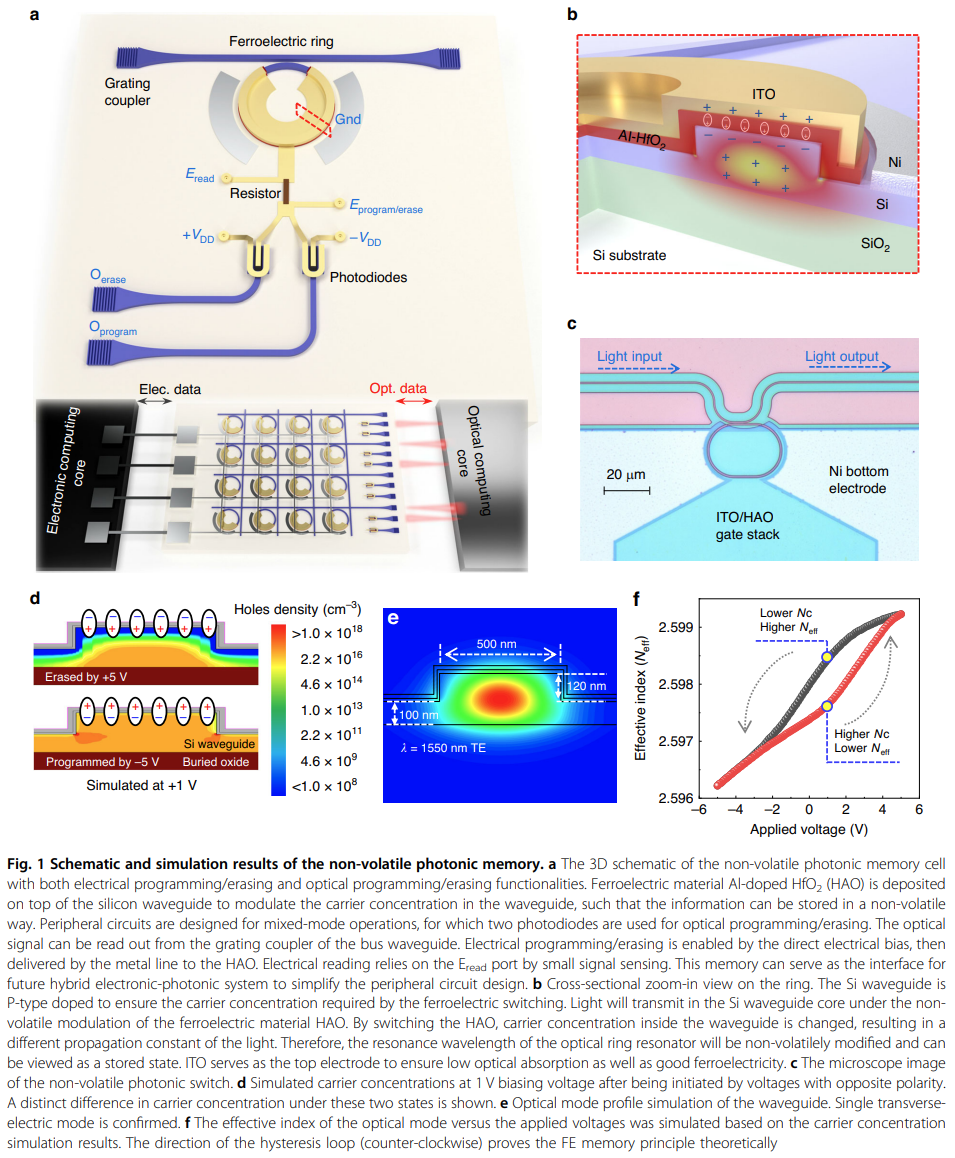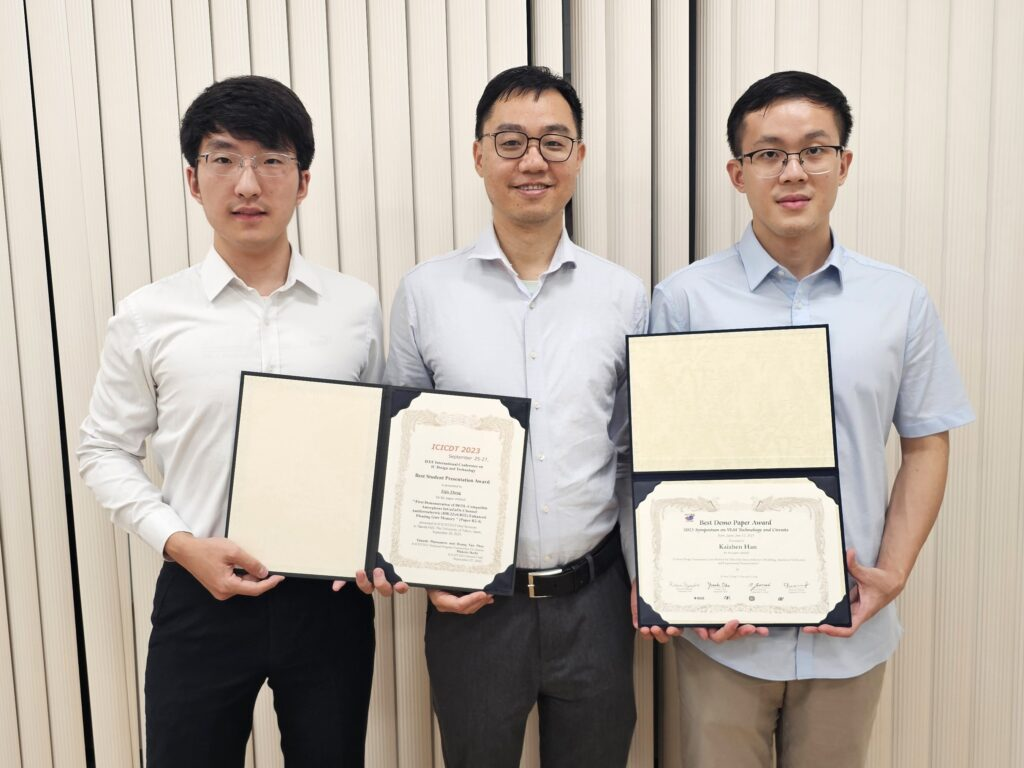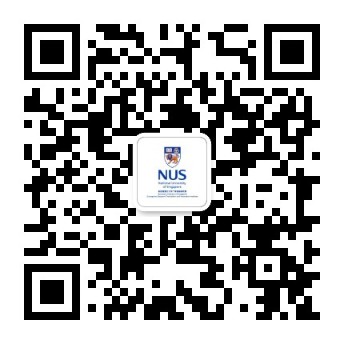The NUS Guangzhou Research Translation and Innovation Institute is committed to building a cross-disciplinary and cross-field research exchange platform to promote the effective transformation and application of research achievements. We will regularly share cutting-edge research results and dynamics with you in this column, and welcome exchanges and discussions!
The research on thin-film ferroelectric photonic-electronic memory presented in this article comes from the team led by Associate Professor Gong Xiao from the Department of Electrical and Computer Engineering at the National University of Singapore. The team has been dedicated to advancing the frontiers of nanoscale semiconductor devices and hybrid storage technologies, aiming to contribute to future high-speed communication and energy-efficient storage solutions. Associate Professor Gong Xiao is also a PhD supervisor at the National University of Singapore Guangzhou Research Translation and Innovation Institute.
Outline of Research
To reduce system complexity and bridge the interface between electronic and photonic circuits, there is a high demand for a non-volatile memory that can be accessed both electrically and optically. However, practical solutions are still lacking when considering the potential for large-scale complementary meta-oxide semiconductor compatible integration. Here, we present an experimental demonstration of a non-volatile photonic-electronic memory based on a 3-dimensional monolithic integrated ferroelectric-silicon ring resonator, We successfully demonstrated programming and erasing the memory using both electrical and optical methods, assisted by optical-to-electrical-to-optical conversion. The memory cell exhibits a high optical extinction ratio of 6.6 dB at a low working voltage of 5 V and an endurance of 4x 104 cycles. Furthermore, the multi-level storage capability is analyzed in detail, revealing stable performance with a raw bit-error-rate smaller than 5.9 x 10-2. This ground-breaking work could be a key technology enabler for future hybrid electronic-photonic systems, targeting a wide range of applications such as photonic interconnect, high-speed data communication, and neuromorphic computing.

Figure 1 above shows the main research results
(Zhang et al. Light: Science & Applications(2024)13:206)(https://doi.org/10.1038/s41377-024-01555-6)
Team Introduction
Our research team focuses on advancing nanoscale semiconductor devices and hybrid memory technologies, with expertise spanning oxide semiconductor (OS) field-effect transistors (FETs), ferroelectric memories, and cutting-edge photonic-electronic integration. We develop high-performance FETs using materials like amorphous Indium-Gallium-Zinc-Oxide (IGZO), Inium-Tin-Oxide (ITO) or Zinc-Oxide (ZnO), achieving remarkable electrical properties through innovative processes such as digital etching. Another significant part of our work involves investigating the reliability of these devices, especially the impact of hydrogen evolution on FETs. By developing a physics-based model, we provide insights into long-term device performance and stability. In the field of memory technologies, we pioneer 3D back-end-of-line (BEOL)-compatible ferroelectric memories with oxide semiconductor channels. These devices demonstrate excellent energy efficiency, memory retention, and endurance. We are also exploring non-volatile photonic-electronic memory systems based on ferroelectric-silicon ring resonators, targeting applications such as photonic interconnects and neuromorphic computing. Our research aims to bridge the gap between electronic and photonic systems, contributing to the future of high-speed communication and energy-efficient memory solutions.

From left to right: Mr. Zheng Zijie, Associate Professor Gong Xiao, Dr. Han Kaizhen
Dual Honors Clinched by Associate Professor Gong Xiao’s Group at IEEE VLSI 2023 in June and ICICDT 2023 and September
Congratulations to Dr. Han Kaizhen and Mr. Zheng Zijie, under the guidance of Associate Professor Gong Xiao from the Department of Electrical and Computer Engineering, for their outstanding achievements at the 2023 IEEE Symposium on VLSI Technology and Circuit (VLSI 2023) and the 2023 IEEE International Conference on Integrated Circuit Design and Technology (ICICDT 2023).
At VLSI 2023 and ICICDT 2023, premier events encompassing a wide array of subjects related to solid-state devices and circuits, the team showcased their groundbreaking research. Dr. Han’s work involved the development of innovative characterization methods for semiconductor materials, while Mr. Zheng’s contributions focused on enhancing the performance of flash memory through the ingenious use of anti-ferroelectric materials. Following meticulous evaluation of the paper quality and presentation excellence, these two works were recognized with the Best Demo Paper Award in VLSI 2023 and the Best Student Paper Award in ICICDT 2023, respectively.
It is worth noting that this marks the second time that Professor Gong Xiao’s research team has secured the Best Demo Paper Award at the IEEE Symposium on VLSI Tcty.
The National University of Singapore Guangzhou Research Translation and Innovation Institute primarily focuses on research in seven major areas: smart cities, information and communications, electronics technology, advanced manufacturing, artificial intelligence, biosciences, and fintech. Leveraging the world-class research capabilities of NUS, the institute brings in dozens of professors, associate professors, and assistant professors from NUS as academic leaders. They lead local research teams to actively promote scientific research, technology transfer, and postdoctoral training programs.
We look forward to working with global experts, entrepreneurs, and policymakers to inspire innovative thinking, explore the limitless possibilities of research, and establish an interdisciplinary and cross-domain ecosystem for research and innovative applications.


